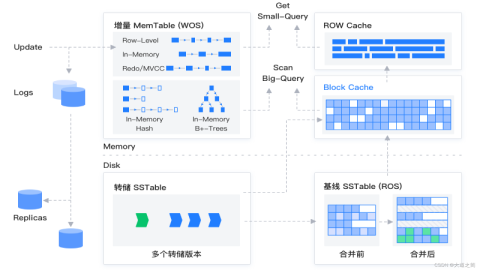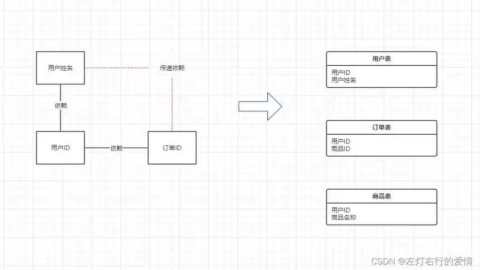转载声明:文章来源https://blog.csdn.net/qq_19749625/article/details/139423742
Java算法系列第十八篇:图算法中的最短路径算法
图算法是计算机科学中重要的一个领域,最短路径算法在实际应用中广泛存在,如地图导航、网络路由等。本文将详细介绍图算法中的最短路径算法,包括Dijkstra算法、Bellman-Ford算法和Floyd-Warshall算法的基本概念、实现方法及其应用场景。
一、最短路径算法的基本概念
最短路径算法的目标是找到图中两点之间的最短路径。根据图的性质和具体需求,最短路径算法可以分为以下几类:
- 单源最短路径:从一个源点出发到所有其他点的最短路径(如Dijkstra算法、Bellman-Ford算法)。
- 多源最短路径:从所有点到所有点的最短路径(如Floyd-Warshall算法)。
二、Dijkstra算法
Dijkstra算法用于求解加权有向图中单源最短路径问题。它的基本思想是通过贪心策略,逐步扩展已找到的最短路径,直到所有顶点都被访问。
Dijkstra算法的实现
import java.util.*;
public class Dijkstra {
static class Edge {
int target, weight;
Edge(int target, int weight) {
this.target = target;
this.weight = weight;
}
}
public static int[] dijkstra(List<List<Edge>> graph, int start) {
int n = graph.size();
int[] dist = new int[n];
Arrays.fill(dist, Integer.MAX_VALUE);
dist[start] = 0;
PriorityQueue<int[]> pq = new PriorityQueue<>(Comparator.comparingInt(a -> a[1]));
pq.offer(new int[]{start, 0});
while (!pq.isEmpty()) {
int[] current = pq.poll();
int u = current[0];
for (Edge edge : graph.get(u)) {
int v = edge.target;
int weight = edge.weight;
if (dist[u] + weight < dist[v]) {
dist[v] = dist[u] + weight;
pq.offer(new int[]{v, dist[v]});
}
}
}
return dist;
}
public static void main(String[] args) {
int n = 5; // 图的顶点数
List<List<Edge>> graph = new ArrayList<>();
for (int i = 0; i < n; i++) {
graph.add(new ArrayList<>());
}
graph.get(0).add(new Edge(1, 10));
graph.get(0).add(new Edge(4, 5));
graph.get(1).add(new Edge(2, 1));
graph.get(1).add(new Edge(4, 2));
graph.get(2).add(new Edge(3, 4));
graph.get(3).add(new Edge(2, 6));
graph.get(3).add(new Edge(0, 7));
graph.get(4).add(new Edge(1, 3));
graph.get(4).add(new Edge(2, 9));
graph.get(4).add(new Edge(3, 2));
int start = 0;
int[] dist = dijkstra(graph, start);
System.out.println("从顶点 " + start + " 到其他顶点的最短距离:");
for (int i = 0; i < dist.length; i++) {
System.out.println("到顶点 " + i + " 的距离:" + dist[i]);
}
}
}运行结果
从顶点 0 到其他顶点的最短距离:
到顶点 0 的距离:0
到顶点 1 的距离:8
到顶点 2 的距离:9
到顶点 3 的距离:7
到顶点 4 的距离:5三、Bellman-Ford算法
Bellman-Ford算法也是求解单源最短路径的算法,但它可以处理包含负权边的图。该算法的基本思想是通过逐步放松边的距离,最终找到最短路径。
Bellman-Ford算法的实现
import java.util.*;
public class BellmanFord {
static class Edge {
int source, target, weight;
Edge(int source, int target, int weight) {
this.source = source;
this.target = target;
this.weight = weight;
}
}
public static int[] bellmanFord(List<Edge> edges, int n, int start) {
int[] dist = new int[n];
Arrays.fill(dist, Integer.MAX_VALUE);
dist[start] = 0;
for (int i = 0; i < n - 1; i++) {
for (Edge edge : edges) {
if (dist[edge.source] != Integer.MAX_VALUE && dist[edge.source] + edge.weight < dist[edge.target]) {
dist[edge.target] = dist[edge.source] + edge.weight;
}
}
}
for (Edge edge : edges) {
if (dist[edge.source] != Integer.MAX_VALUE && dist[edge.source] + edge.weight < dist[edge.target]) {
System.out.println("图包含负权环");
return null;
}
}
return dist;
}
public static void main(String[] args) {
int n = 5;
List<Edge> edges = new ArrayList<>();
edges.add(new Edge(0, 1, 6));
edges.add(new Edge(0, 2, 7));
edges.add(new Edge(1, 3, 5));
edges.add(new Edge(1, 2, 8));
edges.add(new Edge(1, 4, -4));
edges.add(new Edge(2, 3, -3));
edges.add(new Edge(2, 4, 9));
edges.add(new Edge(3, 1, -2));
edges.add(new Edge(4, 0, 2));
edges.add(new Edge(4, 3, 7));
int start = 0;
int[] dist = bellmanFord(edges, n, start);
if (dist != null) {
System.out.println("从顶点 " + start + " 到其他顶点的最短距离:");
for (int i = 0; i < dist.length; i++) {
System.out.println("到顶点 " + i + " 的距离:" + dist[i]);
}
}
}
}运行结果
从顶点 0 到其他顶点的最短距离:
到顶点 0 的距离:0
到顶点 1 的距离:2
到顶点 2 的距离:7
到顶点 3 的距离:4
到顶点 4 的距离:-2四、Floyd-Warshall算法
Floyd-Warshall算法用于求解多源最短路径问题,可以找到图中每对顶点之间的最短路径。该算法的基本思想是动态规划,通过逐步更新最短路径。
Floyd-Warshall算法的实现
import java.util.Arrays;
public class FloydWarshall {
public static int[][] floydWarshall(int[][] graph) {
int n = graph.length;
int[][] dist = new int[n][n];
for (int i = 0; i < n; i++) {
dist[i] = Arrays.copyOf(graph[i], n);
}
for (int k = 0; k < n; k++) {
for (int i = 0; i < n; i++) {
for (int j = 0; j < n; j++) {
if (dist[i][k] != Integer.MAX_VALUE && dist[k][j] != Integer.MAX_VALUE && dist[i][k] + dist[k][j] < dist[i][j]) {
dist[i][j] = dist[i][k] + dist[k][j];
}
}
}
}
return dist;
}
public static void main(String[] args) {
int INF = Integer.MAX_VALUE;
int[][] graph = {
{0, 3, INF, 7},
{8, 0, 2, INF},
{5, INF, 0, 1},
{2, INF, INF, 0}
};
int[][] dist = floydWarshall(graph);
System.out.println("每对顶点之间的最短距离:");
for (int i = 0; i < dist.length; i++) {
for (int j = 0; j < dist[i].length; j++) {
if (dist[i][j] == INF) {
System.out.print("INF ");
} else {
System.out.print(dist[i][j] + " ");
}
}
System.out.println();
}
}
}运行结果
每对顶点之间的最短距离:
0 3 5 7
5 0 2 3
5 8 0 1
2 5 7 0五、总结
最短路径算法是图算法中的重要部分,广泛应用于实际生活中的各种场景。
1.地图导航:
交通导航:使用最短路径算法(如Dijkstra算法)来计算从一个位置到另一个位置的最短路径。导航系统(如Google Maps、Bing Maps)可以根据当前交通状况、路况等因素,动态地计算和推荐最优路线。
公共交通规划:根据公交、地铁等公共交通线路,计算乘客从起点到终点的最优路线,包括换乘建议。
2.网络路由:
数据包路由:在计算机网络中,使用最短路径算法(如Bellman-Ford算法)来计算数据包从源节点到目的节点的最优路径,确保数据能够快速、可靠地传输。常见的路由协议(如OSPF、RIP)采用这些算法来更新路由表。
3.物流与供应链管理:
配送路径优化:物流公司使用最短路径算法(如Floyd-Warshall算法)来规划货物配送路径,确保货物能够快速、经济地送达目的地。通过优化运输路径,可以减少运输成本和时间。
仓储管理:在仓库内部,通过最短路径算法优化物品的存取路径,提高仓库操作效率。
4.机器人路径规划:
自主导航:机器人(如扫地机器人、无人驾驶车辆)使用最短路径算法来规划从当前位置到目标位置的路径,避开障碍物,并选择最短或最安全的路径。
5.社交网络分析:
好友推荐:在社交网络中,使用最短路径算法来分析用户之间的关系,推荐可能认识的好友,增强用户互动。
影响力分析:通过计算社交网络中用户之间的最短路径,可以分析用户的影响力和传播路径,帮助企业在营销活动中更精准地定位目标用户。
6.游戏开发:
路径寻找:在游戏开发中,使用最短路径算法(如A*算法)来实现游戏角色的路径寻找,使得角色能够在复杂的地图中找到最短或最优的路径到达目标位置。
人工智能:在游戏中,敌人或NPC(非玩家角色)使用最短路径算法来追踪玩家或导航地图,提高游戏的挑战性和趣味性。
7.紧急救援:
应急调度:在紧急情况下(如火灾、地震等),使用最短路径算法来规划救援车辆的路径,确保救援人员能够快速到达现场,进行紧急救援和物资配送。
8.资源分配:
能源分配:在能源网络中(如电力、天然气),使用最短路径算法来优化能源的传输路径,减少传输损耗和成本,提高能源利用效率。
这些应用场景展示了最短路径算法在现实生活中的重要性和广泛应用。通过理解和掌握这些算法,可以有效地解决许多实际问题,提升各个领域的效率和效益。希望这篇文章能够帮助你更好地理解最短路径算法及其实际应用。






帖子还没人回复快来抢沙发